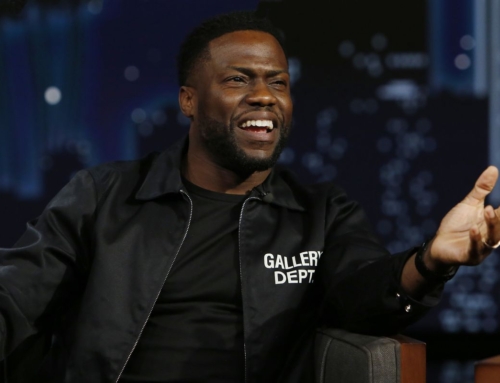Deep house is having its moment in the U.S. Some say it’s about time, but with the subgenre’s newfound popularity comes one criticized aspect: Deep house is fueling similarly massive events and venues that progressive house producers were doing three years ago.
Last year, New York City saw Tchami come to Pier 94 as part of the annual Pier of Fear set of shows. For 2015, the Ultra Music Festival is setting up the Resistance Stage to include newer and classic artists that appeal more to an underground audience: Sasha, Maceo Plex, Nic Fanciulli, Guy Gerber, Jamie Jones, and Art Department, among others.
In between that Anjunadeep, Anjunabeats’ deep house and more experimental sub-label, announced its first U.S. tour, which wrapped up on February 7th. The tour, going to larger clubs and club-like venues like Brooklyn’s Verboten, came at the heels of the Anjunadeep 06 compilation shooting to the top of the iTunes chart, and similar deep house-lite artists, like Dusky, Oliver Heldens, and Bondax scoring hits on the Beatport 100. Yet, while reflecting Anjunadeep’s 10-year history, the tour brought some of its more established artists on the road: 16-Bit Lolitas, Beckwith, Lancelot, Jody Wisternoff, Lane 8, Vincenzo, and Martin Roth.
Because of the shift to a different style of dance music in the U.S., label manager James Grant thought it was time to finally tour. He told the Wall Street Journal: “I wouldn’t say we’ve gone and chased any trends, it’s more like the world has moved toward us suddenly, which is really nice.”
Yet, deep house’s sacredness among the underground has some questioning whether or not touring is the best way to expose audiences, or if the subgenre is better suited to a club atmosphere more reflective of its origins. Here’s why the tour format works:
1. It’s (Reintroducing) Audiences to The Sounds and Vibe
As Anjunadeep’s tour was about to start, producer Beckwith explained to YourEDM, “To be honest, it was the U.S. that has always been the cultural epicenter of house music. It was born in New York, raised in Chicago, then it grew up in Detroit, and moved back to Chicago. The underground culture has always been here. Europe took house music, tweaked it a bit, and made it cooler and totally more accessible.”
Yet, the typical listener who’s gravitating toward this more complex sound might not be aware of this – or even know which DJ to start with. Anjunadeep is a familiar enough name – associated with Above & Beyond and Anjunabeats, both tastemakers in trance and EDM spheres. That association simultaneously indicates expectations yet implies a different experience.
Purists might not like it, but the artists on the label and compilation series serve as a serviceable introduction toward “true” underground artists and classic producers.
At the same time, regardless of subgenre, putting all your money on a DJ, even when that DJ’s had one or two hits, doesn’t always seem to be a successful strategy. For instance, Avicii’s first stadium tour in 2012, right after massive hit “Levels,” still had empty seats, but his momentum seemed to increase after that initial misstep.
As well, The Bounce Bus tour took a similar approach in introducing U.S. listeners to the Melbourne Bounce sound last year. Will Sparks, Timmy Trumpet, and Joel Fletcher had enough of an impact together to draw audiences and expose them to a greater range of sounds.
2. It Reflects What’s Going on in the Rest of the World
The rest of the world seems to view American dance music as a lame joke. Yes, house and techno started here, but Europe ran with it, while American audience feared disco and anything related for close to 30 years. And when the U.S. generally got over its aversion to synthesizers and four-to-the-floor beats, EDM gloriously emerged as a massive amalgamation of progressive house, a hint of trance, and brostep (don’t call it dubstep), and overshadowed everything else.
Yet, in Europe and other parts of the world, deep house has a place – and not just at a side novelty stage – at large music festivals.
Exit, for instance, played Skrillex and Quintino off Disclosure. Groovefest, in the Dominican Republic, bridges older sounds, like DJ Pierre, Kevin Saunderson, and Green Velvet, with the new, like Art Department, Kolsch, and Klangkarussell. A flier for Ultra or EDC, by contrast, has put artists like these in small print toward the bottom for the past three years, or reserved a “special” place in the classic vibe of the Carl Cox & Friends tent.
3. It’s Finally Time
Ultra’s Patrick Moxey told the press about deep house’s emergence stateside: “The great thing about electronic music is every time people want to put it in a box, it changes…Anytime one part of it becomes commercialized, new parts start to reinvent themselves. It’s in a constant process of refreshment.”
Moxey’s right from a few angles. One, mainstream dance music’s had a love affair with everything retro ever since Daft Punk put out “Get Lucky” in 2013. This appreciation for the ‘70s soon morphed into a fondness for the ‘90s – garage, real house singers, and classic R&B.
Insomniac explains that deep house fits in there somewhere, between jazz-influenced instrumentation, smooth vocals, and a growing affinity for Disclosure’s minimal and glitch sound.
Nevertheless, modern mainstream deep house might be uneven. Tchami sounds too retro, Disclosure apes too much off garage, and Gorgon City and Duke Dumont, in emphasizing the R&B elements more and the house characteristics less, have ended up with tracks that feel like a half-baked Ultra Nate oeuvre from the late ‘00s. But at least it’s not another Calvin Harris or Swedish House Mafia banger.
Be it with some trap, hardstyle, or Bounce, or now deep house, mainstream U.S. dance music listeners are starting to come around. It’s only a matter of time before festivals and clubs begin to reflect a greater range of styles and subgenres beyond the house-trance-dubstep EDM trifecta.





